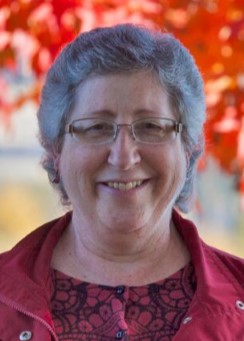Peggy Entzel
Employed at Cascadia from 1986-2020
How long did you work for the district?
34 years
When did you start?
Oct 23rd 1986
What was the office like and typical work when you started?
Cascadia was just a couple people and I was a ½ time secretary. First project was Cashmere Mountain Soil Survey mapping project for NRCS. A year after I started the commission had a Water Quality grant and we hired Chuck Bagley and Bob Heins. Worked on a water quality project where we started doing ambient monitoring to document the baseline water quality conditions in watersheds through the Wenatchee Basin. Chumstick, Stemilt, Mission to establish baseline water quality standards. Received a DOE grant for collecting data for DOE to rank WQ priorities in Chelan Count. Heins was doing flow readings for establishing baseline flow (might still have all that data somewhere) and Peggy did WQ. This helped set in motion the future TMDL study and watershed planning units, and establishment of minimum daily flow in the Wenatchee. Also did surveys in White River, Little Wenatchee, Icicle, Peshastin, Ingalls, Mission. Wenatchee only.
What is one of the most impactful projects you remember working on at the CD?
Entiat watershed plan. Started as early as 1991, but really kicked off in 1994. Phil Jones was hired to work with NRCS to start the watershed survey. The group was already working on problem solving before any statewide legislation was passed mandating the work. DOE, WDFW, etc were coming into the Entiat with a heavy-handed regulatory approach that was not working. Landowners were very upset and told the agencies to stay out. One even got arrested for falling a tree over the road to keep the agencies out. Ray Sandige, Connor Peterson, rick Edwards, Karen Whitehall, Al Shannon, Phil Archibald, John and Jim small just to name a few worked together to form a group formed led by Connor. To watch that group go from a group go from angry citizens to work together and come up with one of the first watershed plans in all of Washington was amazing. Signing the plan felt like a historic moment. I felt really blessed we had the landowner group who at the beginning hated the government agencies. John Monahan was the appointed DOE watershed coordinator and because of the personalities in the Entiat they came to the table to discuss issues and come up with solutions. They wanted a plan that wouldn’t sit on the shelf, but would be dynamic and serve the community. Sarah Walker was the watershed coordinator at the time and could make for a good interview.
Can you think of a project or program that feels like it changed the history, or future, of Chelan County?
During a water quality project DOE and NRCS discovered the soil survey were not working for farmers as expected in Chelan Basin. We worked with NRCS to re map the soils in the basin, which improved the way producers were able to manage their crops, water, and nutrients well into the future. One example is all the pumice in the soils from Glacier Peak volcanic deposits made for very unique water holding capacity in different areas in the basin. Remapping the soils helped individual farmers better conserve water, and better understand where crops should be located in the basin.
Once we finalized the Entiat plan implementation started and it set in motion 30+ years of conservation implementation.
The best part was watching how interested the landowners in the Entiat Valley were in getting the work done in the plan. It wasn’t just to check a box, people wanted to get the work done so that the resources were improved. People really wanted to make sure farming remined sustainable in the valley, to bring fishing and healthy salmon populations back, etc.
Can you think of a story from your time at the CD you would love to tell folks?
Kurt picking up the rattlesnake to save it from the excavator during a salmon restoration project.
First Kids in the Creek in 1993. A lot of the resource people that came to help at the time were USFS and DOE folks. We were set up a ways from the creek and needed to get down a steep rocky embankment to get the kids to some water quality and bug collection experiments in the creek. Rob Plotnikoff from DOE and someone from the USFS carried a young man in the wheel chair down the super steep bank, got him in the water, and helped him participate in the macroinvertebrate collection project just like all the other students because they wanted him to experience the creek and science just like everyone else.

